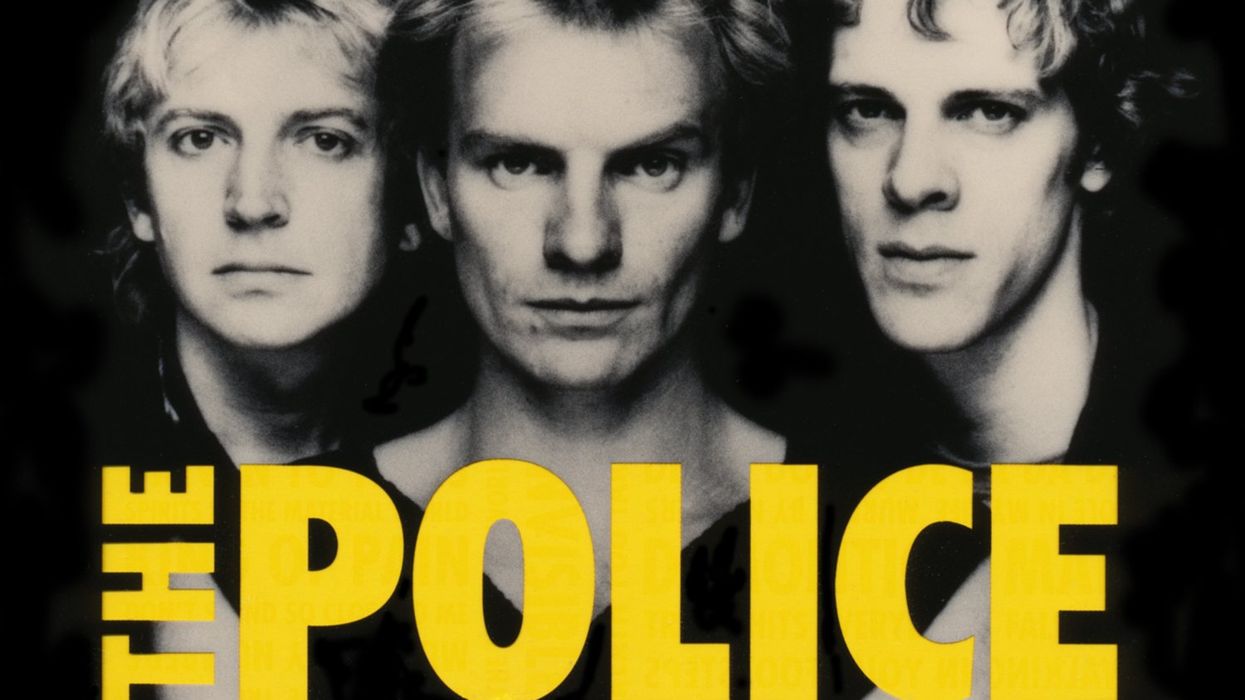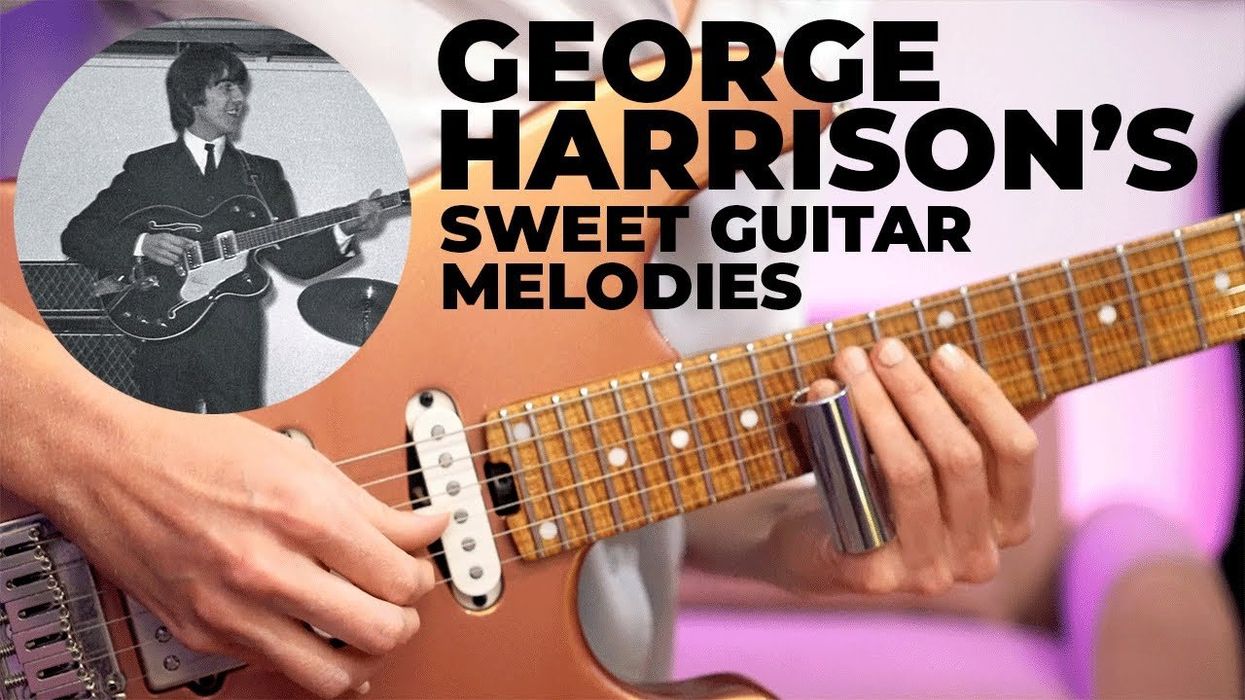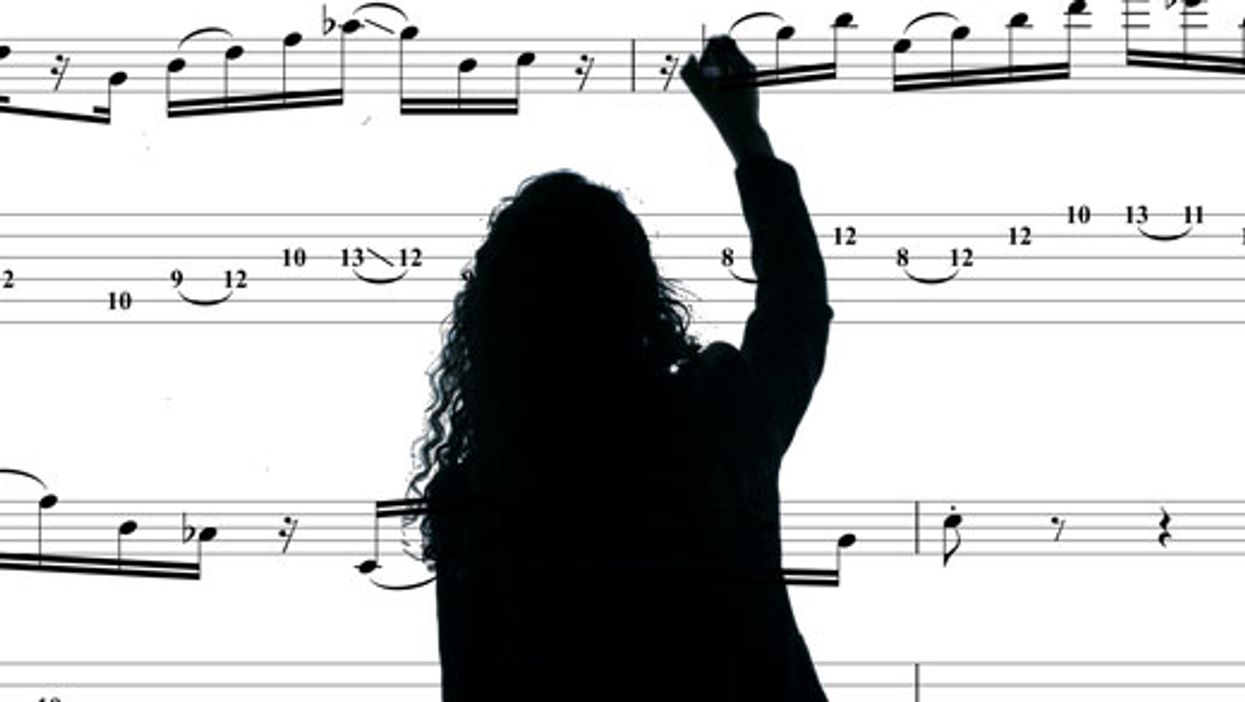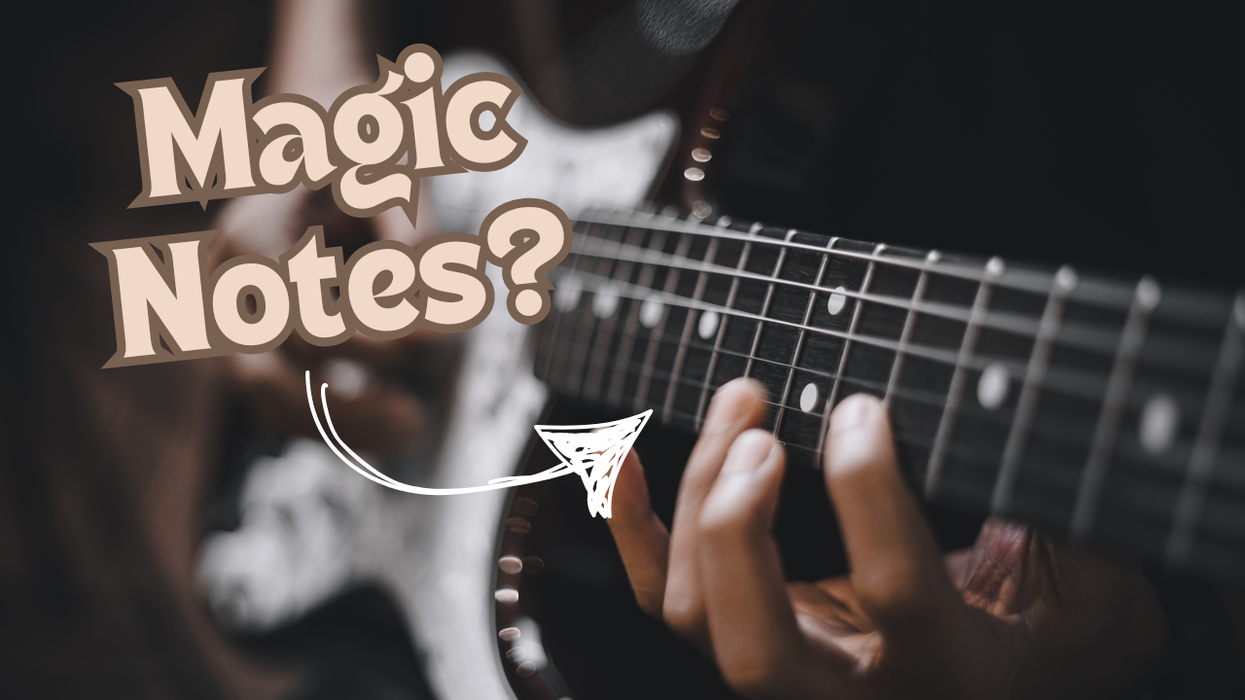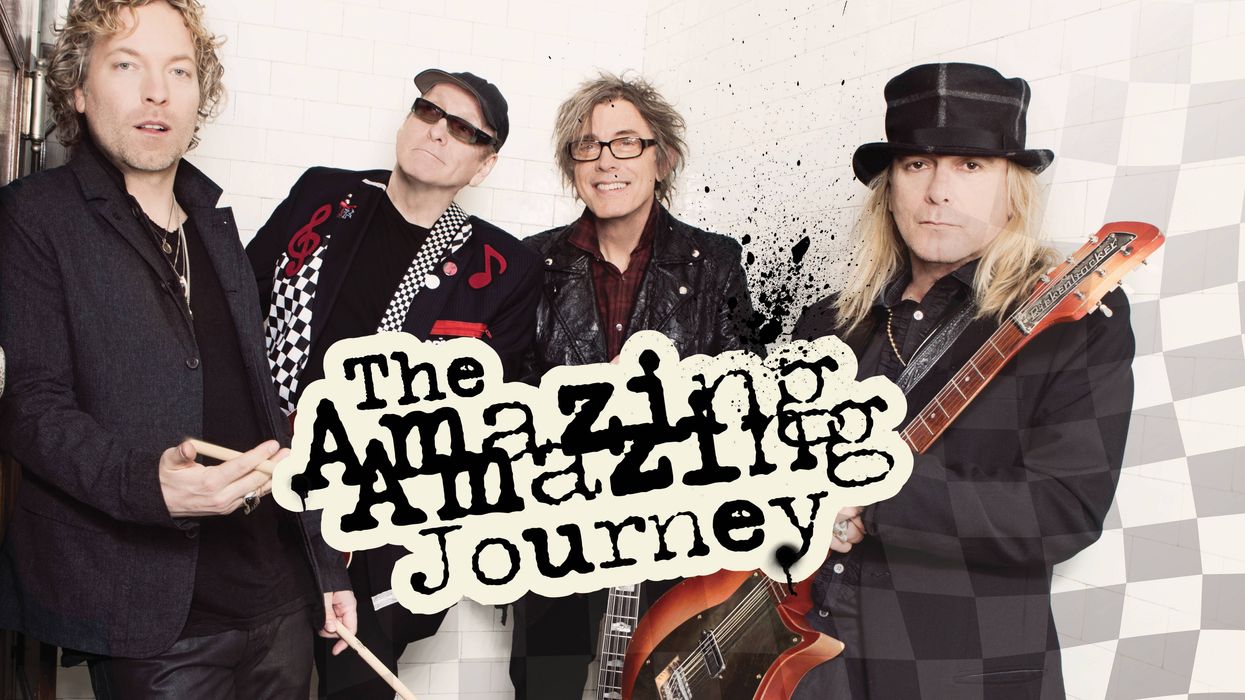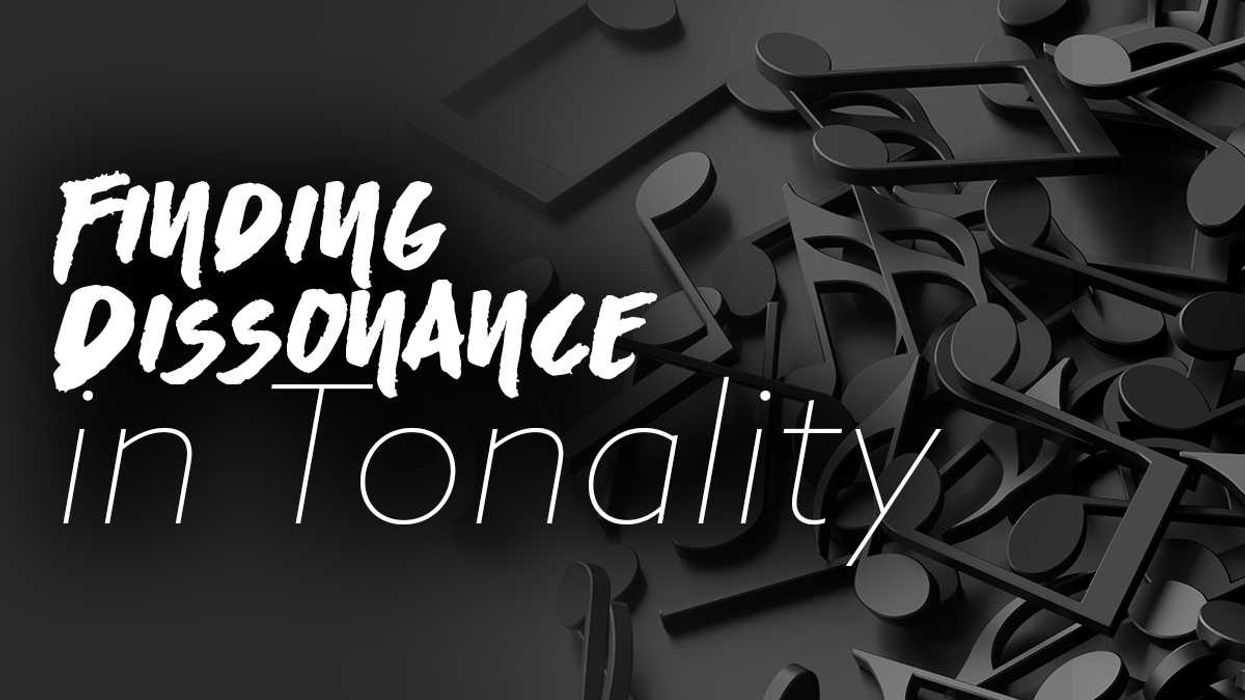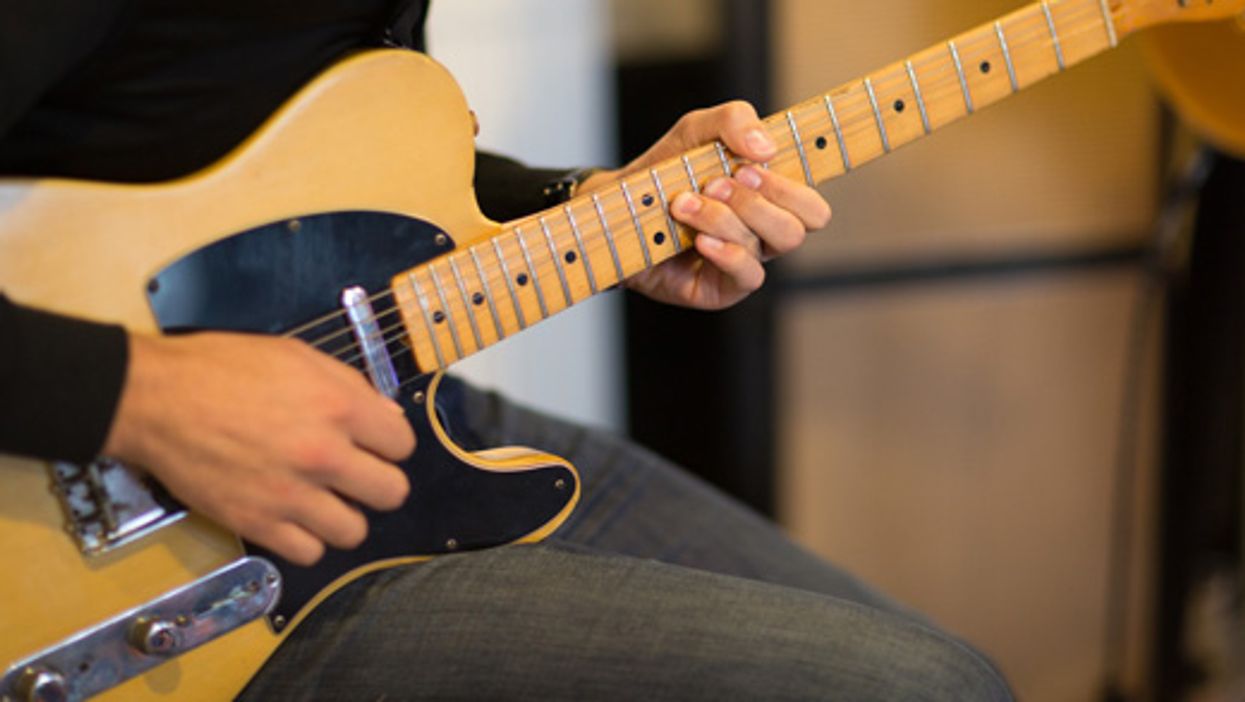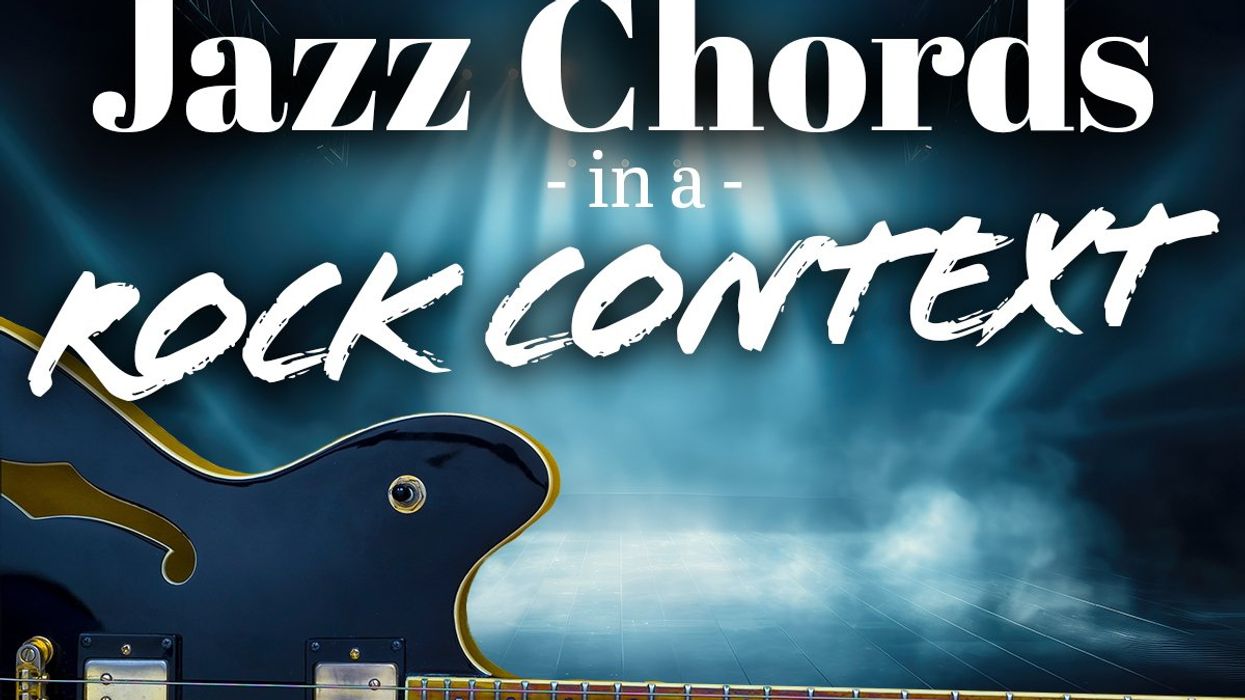Under any condition, imagination produces
interesting alternatives. When
composing music, there are times when
creative continuity seems to fade and is
momentarily replaced with emptiness. In
this lesson, we’ll look at a practical way to
jumpstart your creativity and replace emptiness
with ideas.
It’s rewarding to apply musical techniques to other forms of language. For example, if we take the English alphabet and display it alongside a scalar series, the two separate systems become a device that can translate the language of words into one of melodies. Fig. 1 and Fig. 2 offer two examples that will serve as the starting point for our exploration. In Fig. 1, we combine the alphabet (shown in the left column) with a C major scale (which repeats down the right column). Similarly, Fig. 2 pairs the alphabet with A natural minor (or A Aeolian).

We can then use these templates to create melodic motifs based around selected words. Fig. 3 illustrates the process using “beautiful” and “ugly” to produce a tonal structure. It’s simple: First, spell out each word, then find the note in the right column that corresponds to each letter and enter that below it.

Once you’ve established the structure, you can introduce rhythm to create a basis for your composition. Any scalar module—or number of them—can be attached to this system. You can transpose the motifs to create even more variations.
I had a student interested in John Coltrane’s legendary composition, “Giant Steps.” In addition to studying the song itself (including linear substitutions through its chord structures), we used this words-into-melody technique to create motifs. We chose the words “Coltrane,” “Tenor,” and “Blue” and then transformed them into melodies using the Aeolian mode. You can see how we applied this to “Coltrane” and “Tenor” in Fig. 4.

Notice how in both Fig. 3 and Fig. 4, we resolve the phrase using notes that were generated from the respective words. In Fig. 4, we create additional melodic variety by transposing E and G down an octave.
I used this example as the basis for the title track to my 2003 album, Think Tank. Visit the online edition of this lesson to download a special solo guitar version of “Think Tank.” Fig. 5 shows how I applied the melodic material I generated from “Coltrane” and “Tenor” in the piece’s A section.

 Pat Martino
Pat Martino
Since his first recording as a leader in 1967, Pat Martino has constantly pushed the limits of jazz guitar with his flowing technique and powerful, muscular tone. Showing no signs of slowing down, Martino still travels the world performing and giving lectures about his approach to the guitar. Currently, Martino is working on an autobiography and serving as adjunct faculty at the University of the Arts in Philadelphia. For more info, visit patmartino.com.
It’s rewarding to apply musical techniques to other forms of language. For example, if we take the English alphabet and display it alongside a scalar series, the two separate systems become a device that can translate the language of words into one of melodies. Fig. 1 and Fig. 2 offer two examples that will serve as the starting point for our exploration. In Fig. 1, we combine the alphabet (shown in the left column) with a C major scale (which repeats down the right column). Similarly, Fig. 2 pairs the alphabet with A natural minor (or A Aeolian).

We can then use these templates to create melodic motifs based around selected words. Fig. 3 illustrates the process using “beautiful” and “ugly” to produce a tonal structure. It’s simple: First, spell out each word, then find the note in the right column that corresponds to each letter and enter that below it.

Once you’ve established the structure, you can introduce rhythm to create a basis for your composition. Any scalar module—or number of them—can be attached to this system. You can transpose the motifs to create even more variations.
I had a student interested in John Coltrane’s legendary composition, “Giant Steps.” In addition to studying the song itself (including linear substitutions through its chord structures), we used this words-into-melody technique to create motifs. We chose the words “Coltrane,” “Tenor,” and “Blue” and then transformed them into melodies using the Aeolian mode. You can see how we applied this to “Coltrane” and “Tenor” in Fig. 4.

Notice how in both Fig. 3 and Fig. 4, we resolve the phrase using notes that were generated from the respective words. In Fig. 4, we create additional melodic variety by transposing E and G down an octave.
I used this example as the basis for the title track to my 2003 album, Think Tank. Visit the online edition of this lesson to download a special solo guitar version of “Think Tank.” Fig. 5 shows how I applied the melodic material I generated from “Coltrane” and “Tenor” in the piece’s A section.

 Pat Martino
Pat MartinoSince his first recording as a leader in 1967, Pat Martino has constantly pushed the limits of jazz guitar with his flowing technique and powerful, muscular tone. Showing no signs of slowing down, Martino still travels the world performing and giving lectures about his approach to the guitar. Currently, Martino is working on an autobiography and serving as adjunct faculty at the University of the Arts in Philadelphia. For more info, visit patmartino.com.


